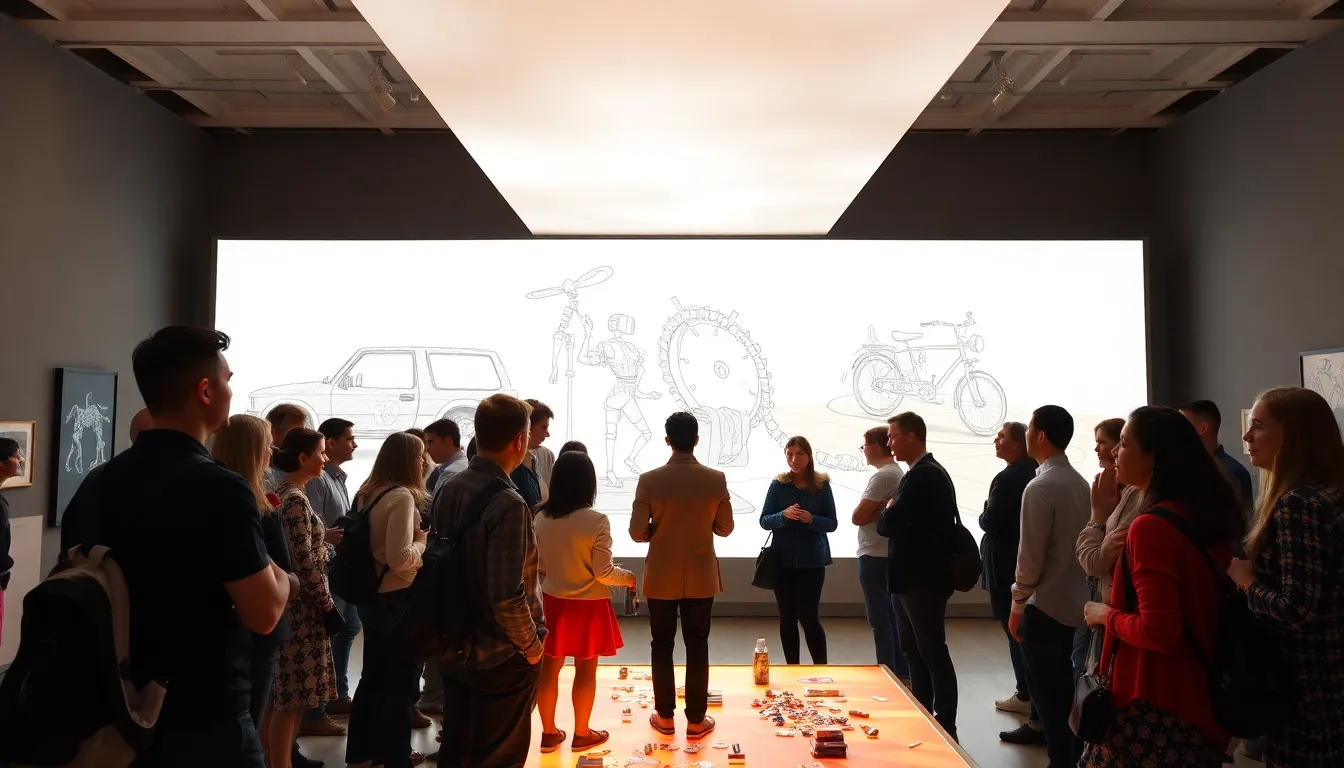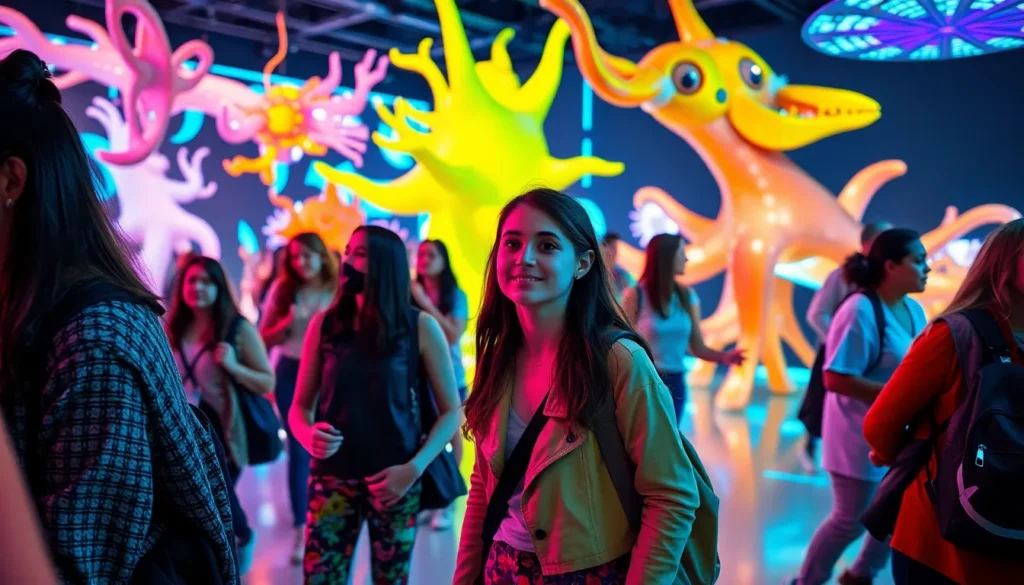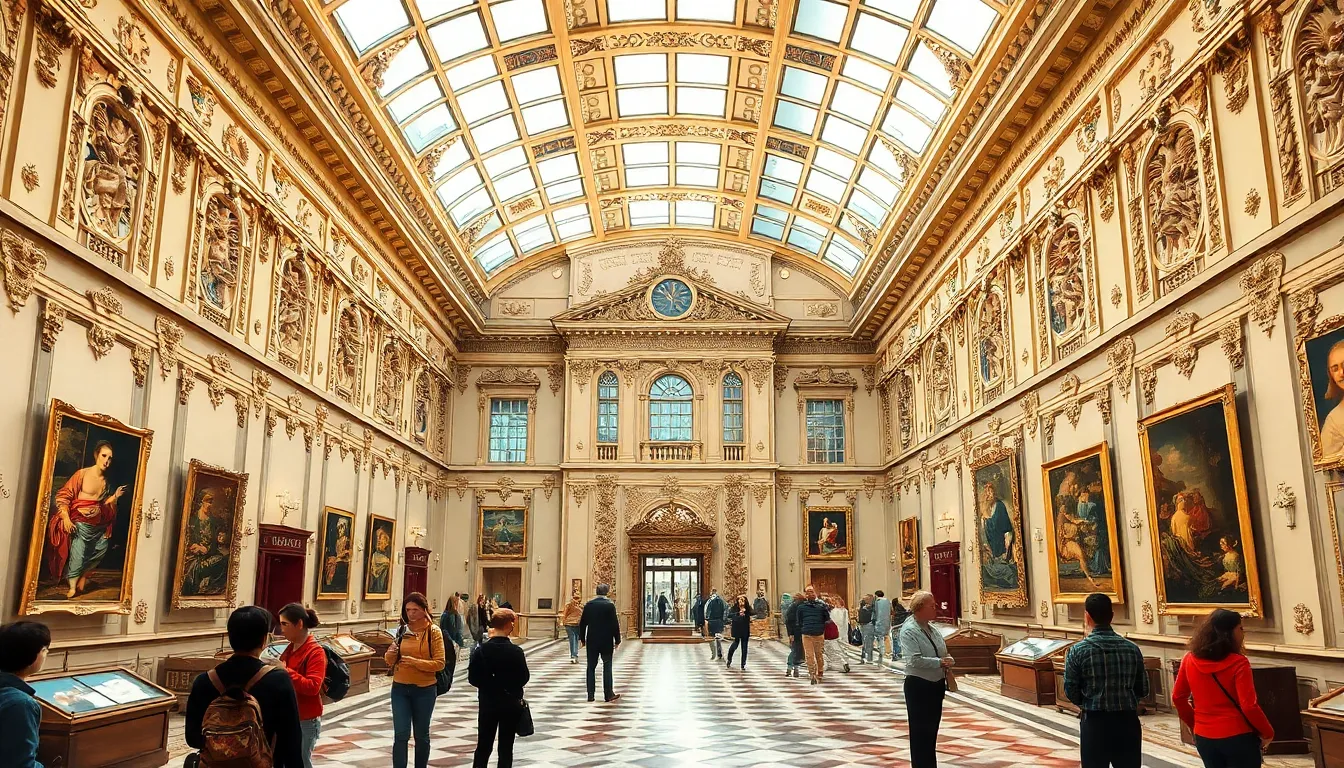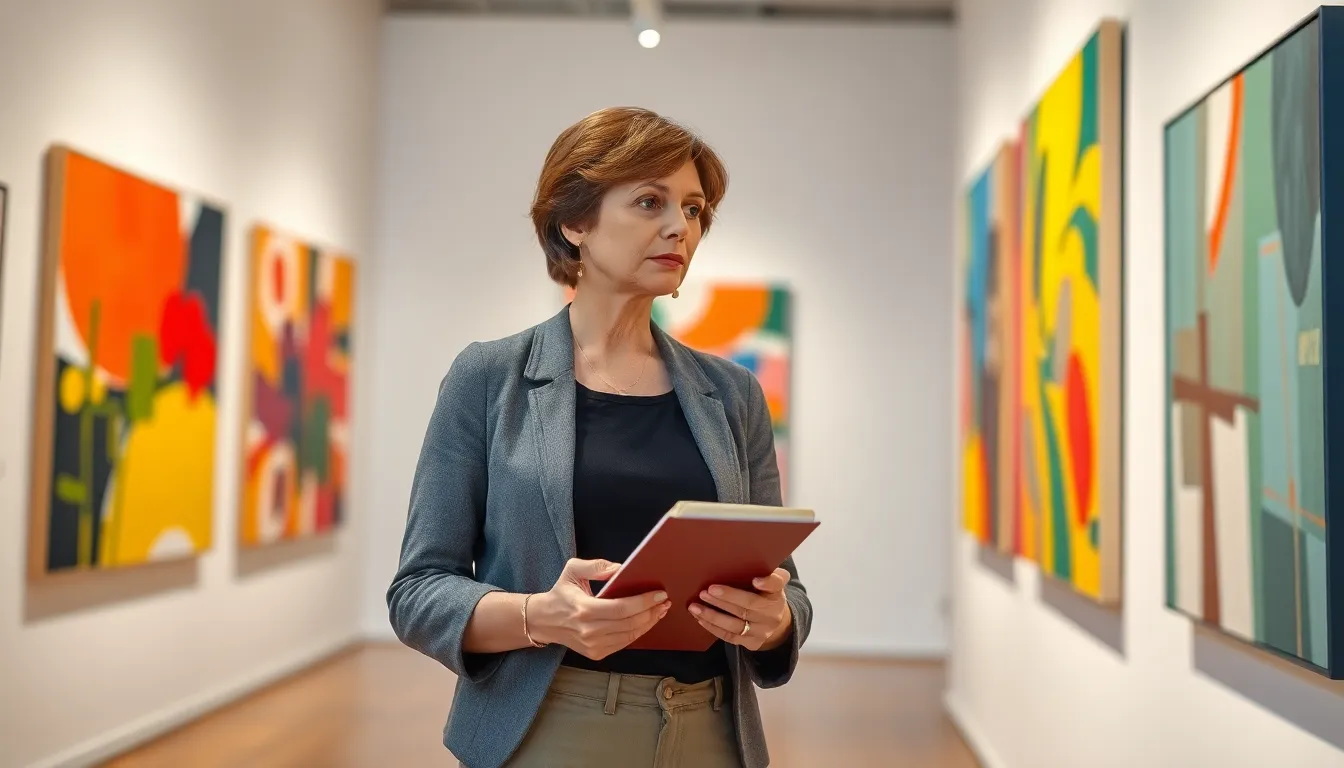Table of Contents
ToggleStep into a world where the ordinary takes a backseat and creativity runs wild. Experimental art exhibits are not just displays; they’re immersive experiences that challenge perceptions and tickle the imagination. Imagine strolling through a gallery where the walls might just start talking back or where the floor feels like it’s made of clouds. Sounds intriguing, right?
Overview of Experimental Art Exhibits
Experimental art exhibits redefine the art experience by fostering interaction between the viewer and the artwork. These exhibits often incorporate various mediums such as installations, performances, and digital elements. Engaging with the environment creates a dynamic atmosphere where art comes to life.
Visitors encounter elements that invite participation, sparking curiosity and creativity. The use of unconventional materials allows artists to challenge traditional norms and push boundaries. Artists such as Marina Abramović and Yayoi Kusama exemplify this approach with their immersive works that provoke thought and evoke strong emotional responses.
Sound, light, and even scent frequently contribute to the sensory experience. Many experimental installations break down the barriers separating the audience from the artist’s vision. Attendees actively participate, influencing their surroundings and shaping their personal interpretations of the artwork encountered.
Locations around the world feature these exhibits, showcasing the global reach of experimental art. Events like the Venice Biennale highlight emerging talents and innovative concepts. Often, these exhibitions attract diverse audiences eager to explore new ideas and perspectives, making art more accessible to the public.
The evolution of technology further enhances the potential for experimentation in art. Virtual reality installations empower artists to create immersive worlds that challenge perceptions of reality. These advancements signal the ongoing transformation of the art landscape, inviting everyone to engage in new and exciting ways.
Key Characteristics of Experimental Art

Experimental art exhibits stand out for their engaging and innovative qualities. These exhibits invite audiences to experience art in dynamic ways that challenge conventional boundaries.
Interactivity and Audience Participation
Interactivity defines many experimental art exhibits. Attendees influence the artwork through their actions, creating unique experiences. Artists design these environments to elicit responses, encouraging visitors to explore their creativity. Examples include participatory installations where individuals contribute to the final outcome. Such engagement fosters a deeper connection between the viewer and the art, transforming spectators into active participants.
Use of Mixed Media
The use of mixed media characterizes many experimental art presentations. Artists combine diverse materials, techniques, and technologies to express complex ideas. This approach allows for the blending of visual art, sound, video, and performance elements. By integrating various mediums, creators challenge viewers’ expectations and stimulate multiple senses. Examples include installations featuring projected images alongside tactile materials, enhancing the overall experience. Through mixed media, artists expand the possibilities of expression while inviting audiences to engage on different levels.
Notable Examples of Experimental Art Exhibits
Experimental art exhibits captivate audiences through innovative approaches. Several noteworthy examples exemplify the transformative power of art.
Case Study: Immersive Installations
Immersive installations create environments where participants engage with art in a meaningful way. For instance, Yayoi Kusama’s “Infinity Mirror Rooms” invite viewers to step into a realm of endless reflections. Each room captures the imagination and evokes feelings of wonder. Similarly, teamLab’s “Borderless” installations blur the lines between digital and physical spaces. Visitors explore vivid digital landscapes that shift and change, offering a unique experience each time. These installations highlight the potential of space to redefine the relationship between art and viewer, fostering a sense of belonging and exploration.
Case Study: Performance Art Exhibitions
Performance art exhibitions bring dynamic experiences to audiences, often challenging societal norms. Marina Abramović’s “The Artist Is Present” stands as a prime example. In this powerful work, she engaged with visitors through silent interaction, creating poignant moments of connection. This type of performance dismantles barriers, inviting attendees to reflect on their own emotions. Another compelling exhibition is “For the Love of God” by Damien Hirst, where live performances accompany installations, merging various art forms. Such exhibitions emphasize the transient nature of art, allowing for personal interpretation while immersing viewers in a one-of-a-kind moment.
Impact on Contemporary Art Scene
Experimental art exhibits significantly influence the contemporary art scene, reshaping how audiences interact with creativity. These exhibits challenge conventional norms, offering immersive experiences that engage the senses and stimulate thought. Artists create environments where participation is essential, allowing viewers to contribute to the artwork’s evolution. The dynamic interaction fosters deeper connections between the audience and the art.
Key players like Marina Abramović and Yayoi Kusama are at the forefront of this movement, engaging visitors in transformative experiences. Their innovative works, characteristically notable for emotional depth, invite personal interpretation, which enriches the viewer’s journey. A variety of mediums, including installations, performances, and digital arts, coalesce to form unique experiences that resonate with different audiences.
Locations such as the Venice Biennale serve as platforms for emerging artists to showcase bold concepts, expanding access to diverse viewing experiences. Artists increasingly utilize technology, from virtual reality to interactive installations, to craft compelling narratives that captivate and challenge. The integration of sound, light, and scent further amplifies these encounters, making art feel more alive and accessible.
Noteworthy examples illustrate the movement’s impact. Yayoi Kusama’s “Infinity Mirror Rooms” envelop visitors in a sea of reflections, creating a sense of endless exploration. Similarly, teamLab’s “Borderless” breaks down traditional boundaries in art presentation, allowing visitors to navigate spaces filled with vibrant digital displays. Such projects enrich the dialogue surrounding contemporary art, inviting fresh conversations about identity, existence, and societal values.
Experimental art exhibits redefine the relationship between viewers and art. They invite participation and interaction, transforming passive observation into active engagement. This shift creates a dynamic experience that fosters creativity and personal interpretation.
As technology continues to evolve, the potential for immersive art grows. Artists push boundaries by blending various mediums, resulting in powerful sensory experiences. The impact of these exhibits resonates beyond traditional galleries, making art more accessible and relevant to contemporary audiences.
Through innovative approaches and thought-provoking concepts, experimental art challenges societal norms and invites dialogue. It encourages everyone to explore their creativity and connect with the artistic vision in profound ways.



